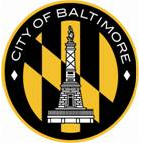Mayor Rawlings-Blake Issues First-of-Its-Kind Ten-Year Financial Plan
Wednesday Feb 20th, 2013

FOR IMMEDIATE RELEASE

BALTIMORE, MD (FEBRUARY 20, 2013) — Today, Mayor Stephanie Rawlings-Blake released the details of a bold set of major reforms contained in the City’s first long-term financial plan, Change to Grow: A Ten-Year Financial Plan for Baltimore. The tough reforms in the plan, including proposed changes to City employee pensions and benefits, the City’s tax structure, vehicle fleet, and overall municipal operations, would amount to the most significant changes to the way the City does business in generations. Mayor Rawlings-Blake outlined several reform initiatives during a Ten-Year Financial Plan kick-off presentation before an audience of hundreds of city stakeholders at The Walters Art Museum in downtown Baltimore.
Mayor Rawlings-Blake said if the bold reforms are enacted, the City’s improved fiscal foundation would help achieve her goal to grow Baltimore by 10,000 families by:
- Eliminating a $750 Million structural budget deficit—protecting basic City services from further cuts;
- Allowing new investments in neighborhood infrastructure—including repairing roads and City facilities, and rebuilding ten recreation centers; and providing a funding surge for demolition of more than 4000 vacant homes;
- All while reducing homeowner property taxes by more than 20% over the next ten years.
“Each of these will help retain and attract residents and jobs. The Ten-Year Financial Plan requires tough trade-offs and major changes to past practices, but it also makes investments that reward the future,” Mayor Rawlings-Blake said.
Mayor Rawlings-Blake noted Baltimore’s post-industrial decline from 1950 to 2000—when the city lost more than a third of its population—but said a “new urban story” is beginning to emerge. “Population loss is slowing to a near halt, and many neighborhoods are experiencing new growth. Baltimore is safer, public education is improving with growing enrollment, more vacants are being rehabbed, and our businesses and institutions have made new investments,” Mayor Rawlings-Blake said.
Mayor Rawlings-Blake said Baltimore is at a turning point. “Will we allow our hard-fought victories to become just a momentary pause—a footnote—in a continuing story of decline? Or, will Baltimore cement a true turnaround toward a future of growth. Our local choices and our local actions will help drive the City’s course,” Mayor Rawlings-Blake continued. “Our city’s lingering narrative of post-industrial decline will not be the story of our future. Baltimore is on the cusp of a proud renewal. We can change to grow.”
During the presentation, Mayor Rawlings-Blake outlined several new initiatives contained in the Ten-Year Financial Plan, including:
- Rebalancing the way City employees are compensated with more affordable, sustainable benefits and better wages, including:
- Reforming civilian pension benefits for current employees to require employee contributions, and other reforms, while using some of the savings to improve salaries.
- Enacting a defined contribution, 401(k) style retirement plan for all new civilian hires.
- Enacting a “hybrid” defined contribution/defined benefit plan for all new public safety hires, while protecting recent pension reforms for current public safety personnel by appealing a recent federal court decision (the overwhelming majority of reforms were upheld).
- Expanding wellness programs to promote a healthier workforce and reduce costs and conducting an immediate health coverage eligibility audit to ensure that all dependent health coverage is legitimate. These initiatives build upon major health benefit changes implemented January 1, 2013, which were early recommendations of the Ten-Year Financial Plan process. These changes are already expected to save $20 million annually.
- Investing in technology and automation to increase productivity.
- Modernizing the City’s vehicle fleet to reduce maintenance costs.
- Negotiating a new schedule for firefighters—with higher pay—to increase efficiency and prevent future firehouse closures. Among the 25 largest U.S. cities, including Baltimore, 19 fire departments have work schedules exceeding Baltimore’s 42-hour week, with a median work week of 52 hours.
- Reducing the size of our workforce by at least 10% over 8 years through a combination of attrition and eliminating vacant positions, on top of the roughly 1,000 budgeted positions eliminated in recent years.
- Creating a new solid waste enterprise for trash, recycling, and sanitation by collecting a user fee—as is done in other Maryland counties, including Anne Arundel, Howard, Montgomery, and Prince George’s counties—and using the savings to cut property taxes, dollar-for-dollar.
- Implementing a state-mandated storm water charge to rebuild crumbling storm drains and fund greening projects, in order to improve the water quality of Baltimore’s harbor and city streams.
Mayor Rawlings-Blake said that if all of these reforms are implemented, the City would be able to reward the future with the following investments:
- Eliminating the $750 million structural deficit, thereby protecting basic City services— police, fire, sanitation, and recreation—from major future cuts.
- Advancing a major funding surge for blight elimination—helping to tear down more than 4,000 vacant structures. The plan quadruples local dollars for Vacants-to-Value demolitions to more than $100 million over ten years. The investment would be front-loaded with $10 million in City funds, combined with another $9 million from the Maryland Attorney General’s mortgage settlement.
- Increasing capital funding to rebuild ten recreation centers as part of a new network of larger, higher-quality community centers.
- Expanding local funding for transportation, including repairing roads and bridges, while seeking a renewed state commitment for highway revenue, which has declined dramatically in recent years. (In total, the Ten-Year Financial Plan provides for more than $370 million in new local funding for capital investment over 10 years, providing a local stimulus to support job creation.)
- Sustaining the City’s commitment to school renovations over the long term.
- Preventing furloughs and pay freezes, raising employee take-home pay, and providing affordable, competitive benefits—helping to attract and retain the best City workforce.
- Creating tax incentives to convert vacant office buildings and construct new apartments downtown and in key neighborhood corridors to help grow the City’s population.
- Cutting property taxes for homeowners by nearly 50 cents (22%)—over the life of the Ten-Year Financial Plan by reducing City spending and using savings from the new solid waste and storm water enterprises and other initiatives.
Download the Report
The Ten-Year Financial Plan is the product of more than a year of careful study assisted by national financial experts, outreach and meetings with dozens of key stakeholders, and unprecedented collaboration between City agencies. Over the course of the next year, and beyond, the Rawlings-Blake administration will work in partnership with the City Council, all City employees, the citizens of our communities, and others to implement the strategies outlined in this plan.
To download a copy of the report, click here.